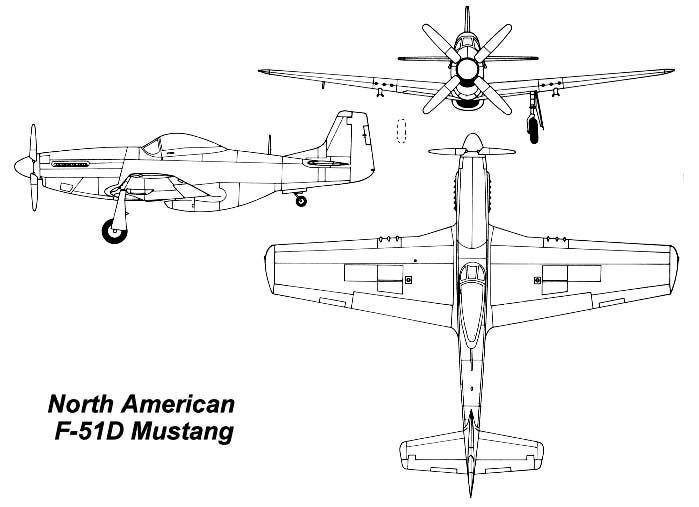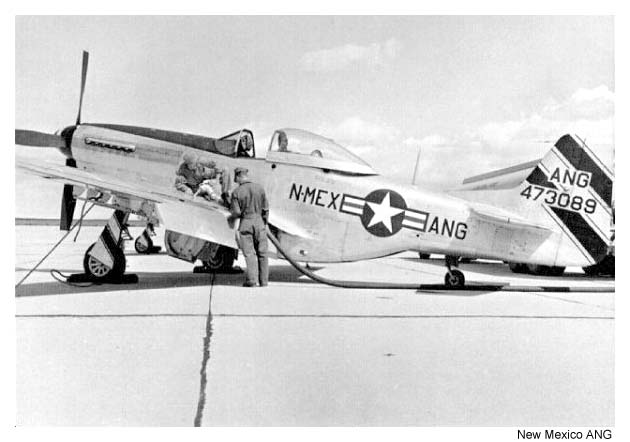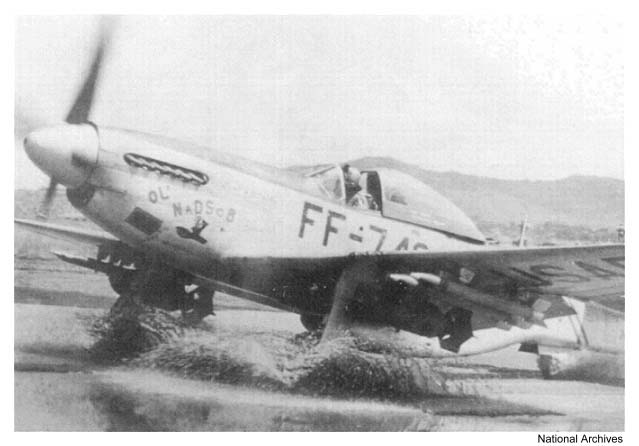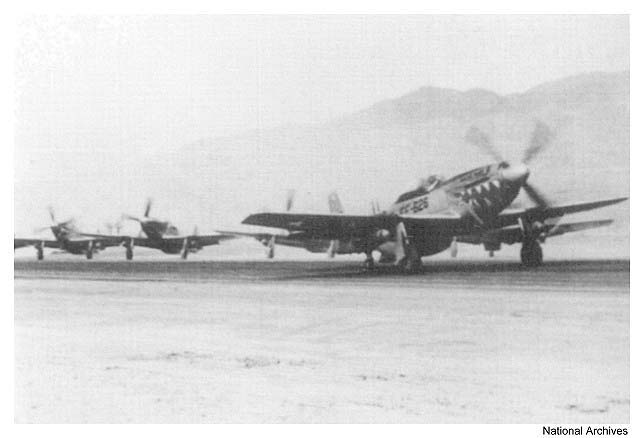Find the perfect fit with Amazon Prime. Try Before You Buy.

Find the perfect fit with Amazon Prime. Try Before You Buy.
North American F-51D Mustang

 Precious few combat aircraft were available at the onset of the North Korean invasion.
The F-51D Mustang (the F designation replacing P in 1948) was one of the few types that was needed for combat immediately.
However, none were in the region at the outbreak of the conflict.
Because of the emergency, F-51s were gathered from Reserve and Air Guard units, as well as being taken from storage, and shipped to Japan,
with several F-80 squadrons having the unique experience of transitioning from a modern jet fighter, to an obsolescent propeller driven fighter.
This aircraft is typical of that which equipped many of the Air National Guard units
in the United States. Obviously, this one served with the New Mexico ANG.
Precious few combat aircraft were available at the onset of the North Korean invasion.
The F-51D Mustang (the F designation replacing P in 1948) was one of the few types that was needed for combat immediately.
However, none were in the region at the outbreak of the conflict.
Because of the emergency, F-51s were gathered from Reserve and Air Guard units, as well as being taken from storage, and shipped to Japan,
with several F-80 squadrons having the unique experience of transitioning from a modern jet fighter, to an obsolescent propeller driven fighter.
This aircraft is typical of that which equipped many of the Air National Guard units
in the United States. Obviously, this one served with the New Mexico ANG.
 Weather was as much an enemy as the North Koreans.
Sub-zero cold, never ending wind, white-out blizzards and blinding downpours were commonplace.
Here we see a Mustang as it plows through deep standing water on the taxiway of a Korean airfield.
Such ponding of rainwater made the simple act of getting to the runway hazardous.
Pilots had to exercise extra caution as wet brakes could result in ground accidents.
This Mustang was assigned to the 67th FBS, which was the last squadron to continue flying the F-51 until they transitioned to the
F-86 Sabre after their final combat mission in the Mustangs on January 3, 1953.
Weather was as much an enemy as the North Koreans.
Sub-zero cold, never ending wind, white-out blizzards and blinding downpours were commonplace.
Here we see a Mustang as it plows through deep standing water on the taxiway of a Korean airfield.
Such ponding of rainwater made the simple act of getting to the runway hazardous.
Pilots had to exercise extra caution as wet brakes could result in ground accidents.
This Mustang was assigned to the 67th FBS, which was the last squadron to continue flying the F-51 until they transitioned to the
F-86 Sabre after their final combat mission in the Mustangs on January 3, 1953.
 Every effort to contain the initial North Korean onslaught was made in the early days of the war.
Under these priorities, the F-51 and its pilots were thrown in to bomb and strafe the the North Korean forces.
Not only were the front lines targeted, the logistical base of the North Korean army was also hammered. Mustangs performed
excellent work in these roles, as well as crushing the North Korean Air Force's efforts over
the battle front. Nonetheless, the F-51 was not well suited for ground attack and
close support. It lacked armor on its underside, and its ventral radiator was
extremely vulnerable to enemy ground fire. Gradually, the F-51 was withdrawn from combat duty, being replaced by
higher performing jet fighters. Yet, there is little doubt that the Mustang was critical to
containing the North Korean attack, buying valuable time for the United Nations forces to consolidate
the Pusan Perimeter. It also filled a vitally important role during the Inchon landings and helped slow down
the massive Chinese attack in late 1950. The F-51s in this photograph taxi out for another mission. Each is
armed with a pair of 500-pound bombs on their underwing pylons.
Every effort to contain the initial North Korean onslaught was made in the early days of the war.
Under these priorities, the F-51 and its pilots were thrown in to bomb and strafe the the North Korean forces.
Not only were the front lines targeted, the logistical base of the North Korean army was also hammered. Mustangs performed
excellent work in these roles, as well as crushing the North Korean Air Force's efforts over
the battle front. Nonetheless, the F-51 was not well suited for ground attack and
close support. It lacked armor on its underside, and its ventral radiator was
extremely vulnerable to enemy ground fire. Gradually, the F-51 was withdrawn from combat duty, being replaced by
higher performing jet fighters. Yet, there is little doubt that the Mustang was critical to
containing the North Korean attack, buying valuable time for the United Nations forces to consolidate
the Pusan Perimeter. It also filled a vitally important role during the Inchon landings and helped slow down
the massive Chinese attack in late 1950. The F-51s in this photograph taxi out for another mission. Each is
armed with a pair of 500-pound bombs on their underwing pylons.
Read More About This Aircraft
Return To Main Page: The Air War Over Korea

Unless otherwise indicated, all articles Copyright © Corey C. Jordan 2001.
Reproduction for distribution, or posting to a public forum without express
written permission is a violation of applicable copyright law.






